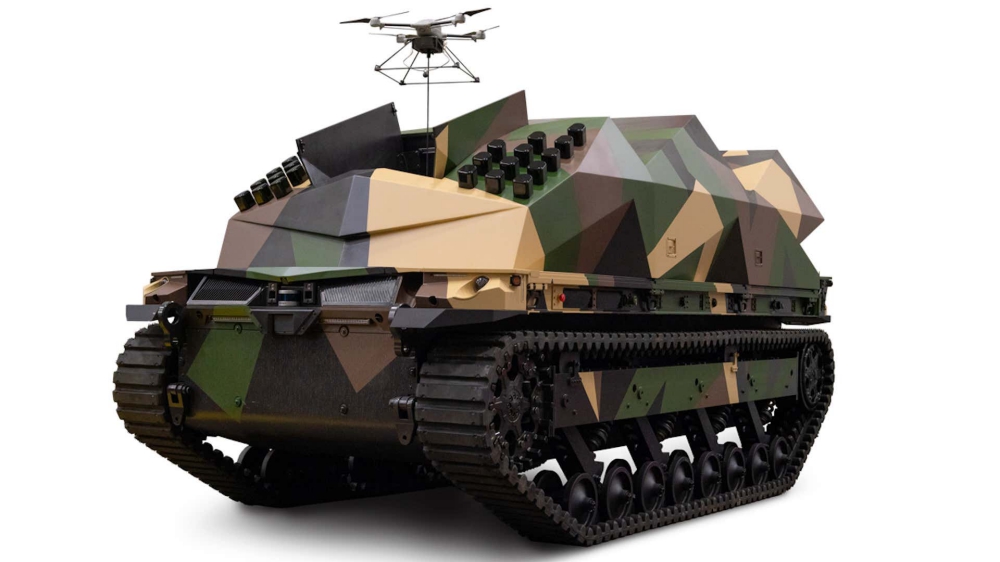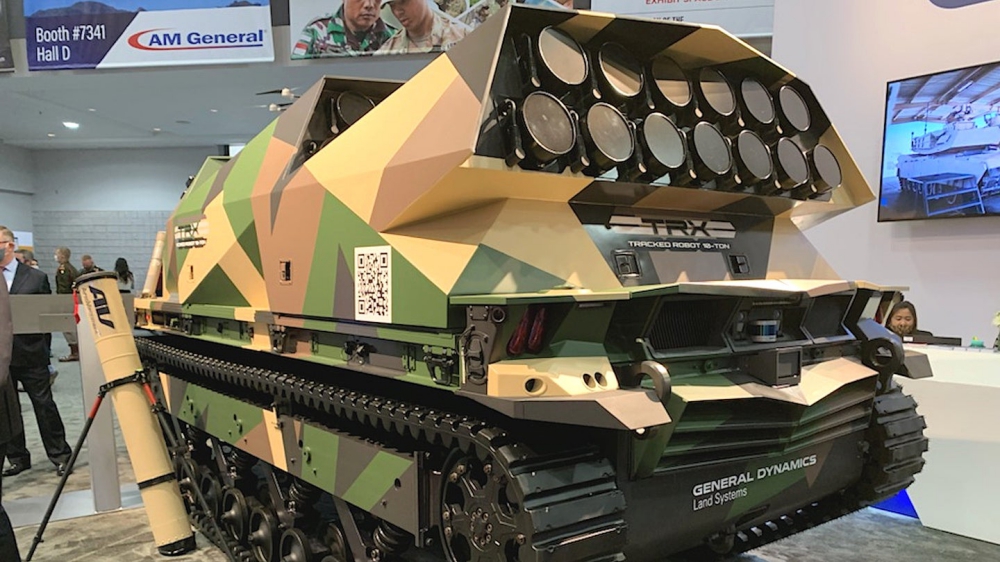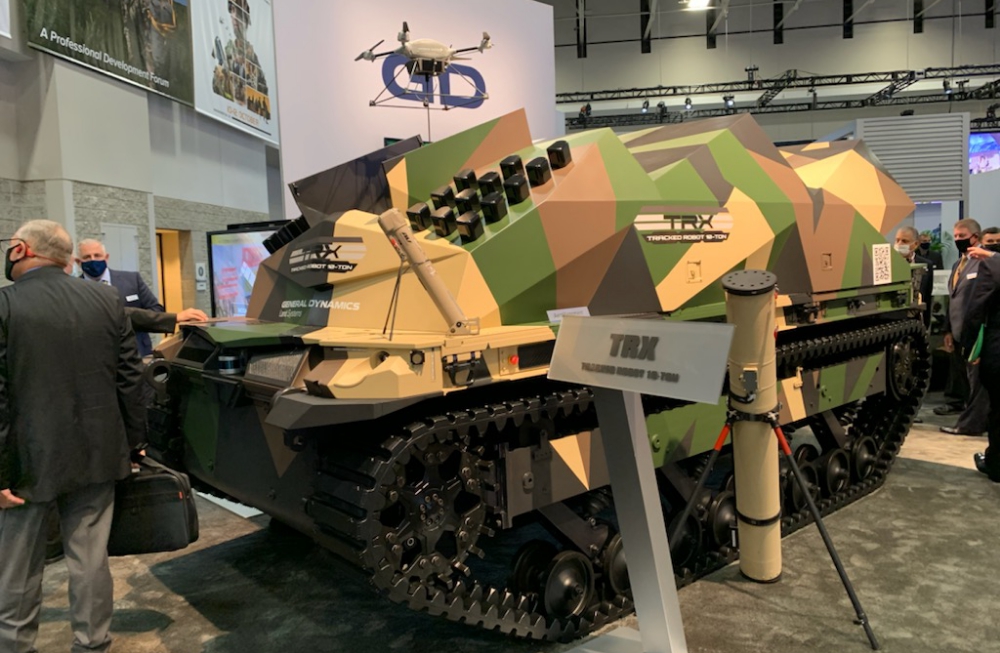General Dynamics Land Systems’ showcased a mockup of its TRX tracked unmanned ground vehicle configured as a unique mobile launch platform for 50 AeroVironment Switchblade loitering munitions, commonly referred to as “suicide drones,” last week.
This followed news that the Army now plans to test versions of the TRX, which stands for Tracked Robot 10-Ton, alongside Howe and Howe Technologies’ Ripsaw M5 unmanned mini-tank and Pratt Miller and QinetiQ’s Expeditionary Modular Autonomous Vehicle during an experimental exercise next year.
The loitering munition-armed TRX concept was on display at the Association of the U.S. Army’s (AUSA) main annual conference in Washington, D.C.. General Dynamics Land Systems (GDLS) had first unveiled TRX at the AUSA gathering last year. This builds off the company’s formal partnership with AeroVironment, which it first announced in 2018.

A TRX tracked unmanned ground vehicle configured to launch dozens of AeroVironment Switchblade 300 and 600 loitering munitions. This version of the design also has a tethered quadcopter-type drone
The TRX on display at AUSA this year has two banks of 13 launch tubes for Switchblade 600 drones, as well as two other arrays, each with 12 tubes capable of launching smaller Switchblade 300s. It also has a tethered quadcopter-type unmanned aerial vehicle that is stowed internally when not in use.
This configuration presents a significant combination of reconnaissance and surveillance, as well as organic strike capabilities, in a relatively small and mobile package that can be used in very high-risk environments. What makes loitering munitions, such as the Switchblades, different from more traditional drones and missiles, is that can scout ahead and otherwise search for potential targets of interest and then initiate strikes on them directly, if desired.
AeroVironment’s Switchblade family, like many loitering munitions, have an operator-in-the-loop control arrangement, where the user “sees” what the drone does via the feeds from the electro-optical and infrared cameras in its nose through the course of its flight. While the drones can be directed to fly to specific locations and automatically track designated targets, or even hit selected coordinates, the operator can also make fine adjustments to their course manually. This increases the accuracy of the system and also offers an added margin of safety, offering the user the option of aborting a strike should circumstances change, such as innocent bystanders suddenly appearing in the target area.
The exact purpose of the tethered drone in this particular TRX configuration is unclear, but it could provide a signal relay to allow it to operate well forward of its operators. This could be especially useful to help extend the reach of the datalink to its loitering munitions, or even ensure connectivity is possible at all in urban and high terrain. Fitting this tethered unmanned aerial system with a set of videos would also allow it to conduct localized surveillance around the vehicle, as well. If it could be untethered, it could help search for potential targets, especially those hiding behind cover.
The complete package could give even relatively small units a tremendous amount of organic precision firepower against threats at extended ranges, including those not within direct line of sight. It would give those same forces significantly increased battlefield awareness, as well. The fact that it is unmanned means it can operate forward of friendly troops in extremely dangerous areas, as well.
As already noted, this is just one possible configuration of TRX, which GLDS offers as a modular platform that can be readily reconfigured to meet customer requirements. GDLS had notably previously shown a less involved loitering munition launch platform concept with three eight-cell launchers for Switchblade 600s and two six-cell launchers for Switchblade 300s on a simple flat deck, as seen in the video below.
“TRX features innovative thinking, ranging from its AI [artifical intelligence]-enhanced design to advanced, lightweight materials and a hybrid-electric propulsion system,” according to GDLS’ website. “TRX is positioned to provide superior performance as an enabling technology in a myriad of critical battlefield roles, including direct and indirect fire, autonomous resupply, complex obstacle breaching, counter-unmanned aerial systems (C-UAS), electronic warfare (EW), reconnaissance and other battlefield missions.”
Source: The Drive


